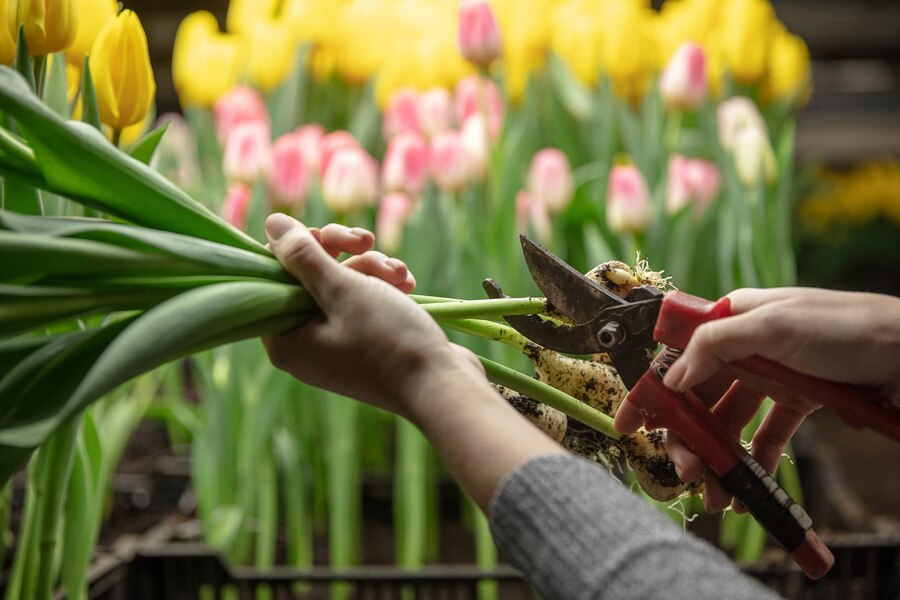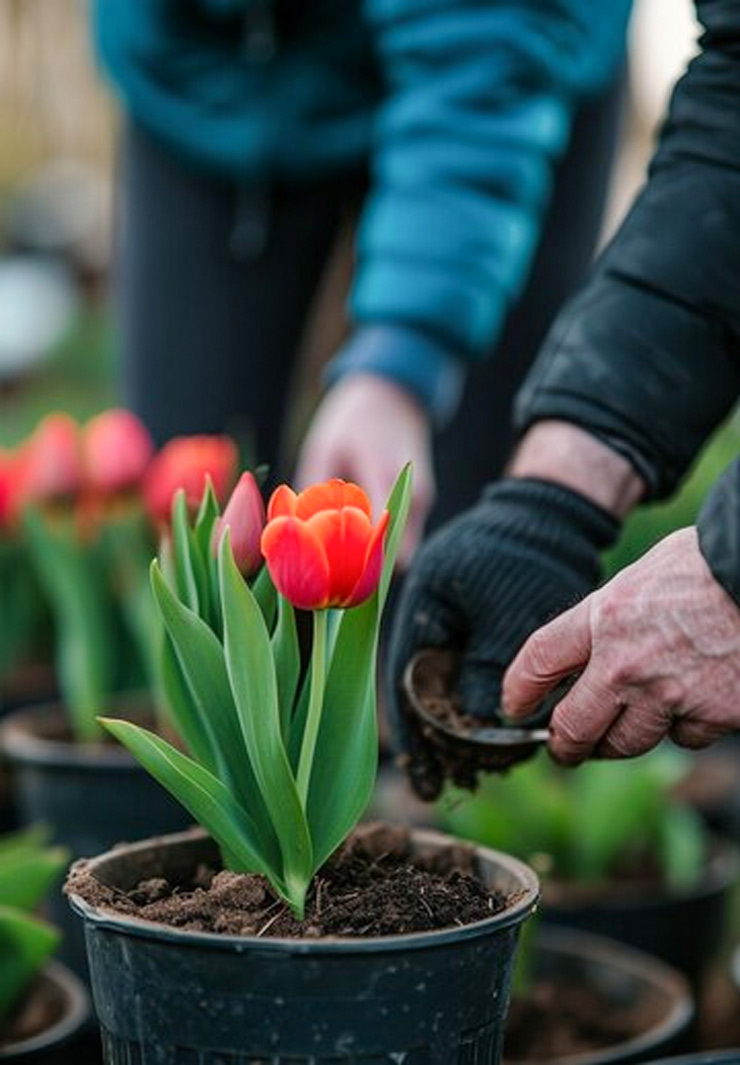
Is there anything more uplifting than a vibrant display of tulips in full bloom during the spring? After the chilly winter, these bright and colourful flowers are a welcome sight. With winter coming to an end and spring beginning to unfold, it’s the perfect time to start planting tulips in pots for your home garden. If you're eager to add this cheerful touch to your space, we’ve compiled a guide with tips and tricks to help you create a stunning and long-lasting tulip display in your garden.
Growing tulips in pots is a great way to bring vibrant colours to your home or garden. Here's a step-by-step guide to help you successfully grow tulips in pots:
Select a pot that is at least 8-10 inches deep and wide enough to comfortably accommodate the tulip bulbs. The pot should have drainage holes to prevent water from accumulating and causing the bulbs to rot.

Don't Miss: 5 Ways To Take Care Of Your Jasmine Plant
Fertilise your tulips with a balanced, water-soluble fertiliser about once a month, starting when you notice new shoots emerging. Avoid over-fertilising, as this can lead to poor bulb development.
Continue watering regularly to keep the soil slightly moist. As the flowers bloom, you may need to water more frequently to keep the soil from drying out completely.
Once the tulips begin to bloom, enjoy their vibrant colours and unique beauty. The flowers typically last for about 1-2 weeks.

Here are some easy tips to help you take care of your tulip plants:
Tulips need moderate watering. Make sure the soil is well-draining to prevent waterlogging, which can cause the bulbs to rot. Water the plants when the top inch of soil feels dry, but avoid over-watering.
Don't Miss: How To Grow Radishes In A Bottle: A Step-by-Step Guide For Beginners
Tulips love the sun, so plant them in a spot where they receive 4-6 hours of direct sunlight each day. If growing in pots, place them on a windowsill or balcony that gets plenty of light. More sunlight encourages strong growth and vibrant blooms.
Tulips benefit from a balanced, slow-release fertiliser when they begin to grow in the spring. Apply a light dose of fertiliser about once a month. Be cautious not to over-fertilise, as this can lead to weak stems and excessive foliage rather than strong blooms.
Keep reading Herzindagi for more such stories.
Credits: Freepik
Also watch this video
Herzindagi video
Our aim is to provide accurate, safe and expert verified information through our articles and social media handles. The remedies, advice and tips mentioned here are for general information only. Please consult your expert before trying any kind of health, beauty, life hacks or astrology related tips. For any feedback or complaint, contact us at compliant_gro@jagrannewmedia.com.